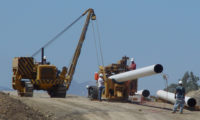Utility regulators in the U.S. are looking for ways to get natural gas to more homes, a move that could spark the construction of new distribution systems and increase the demand for larger natural-gas transmission pipelines.
In April, the National Association of Regulatory Utility Commissioners created a task force that will look at ways to serve rural and other communities that now rely on propane or heating oil for their cooking and heating needs.
“We will better understand the demand for natural-gas service in unserved and underserved areas, the barriers and obstacles to such access and expansion [for example, consumers’ inability to pay for access or conversion to natural-gas service], and provide relevant economic information on the costs and benefits to expand natural-gas distribution infrastructure,” NARUC President Robert F. Powelson said in a statement.
Currently, about half the nation’s homes are served by natural gas. The installation of new natural-gas distribution lines typically only occurs when utilities already are replacing their old cast-iron and bare steel pipe, says Dana Book, manager of pipeline projects at Burns & McDonnell. When utilities get approval to charge customers to replace those older lines, 10% to 20% of the time the utility also will expand the system. But utilities rarely create or expand systems without that impetus, he notes.
The development of new or expanded distribution systems could spur the need for new gas transmission lines and possibly help to overcome some of the opposition to such lines, he says. Unlike interstate natural-gas pipelines, distribution lines are generally approved at the local and state levels.




